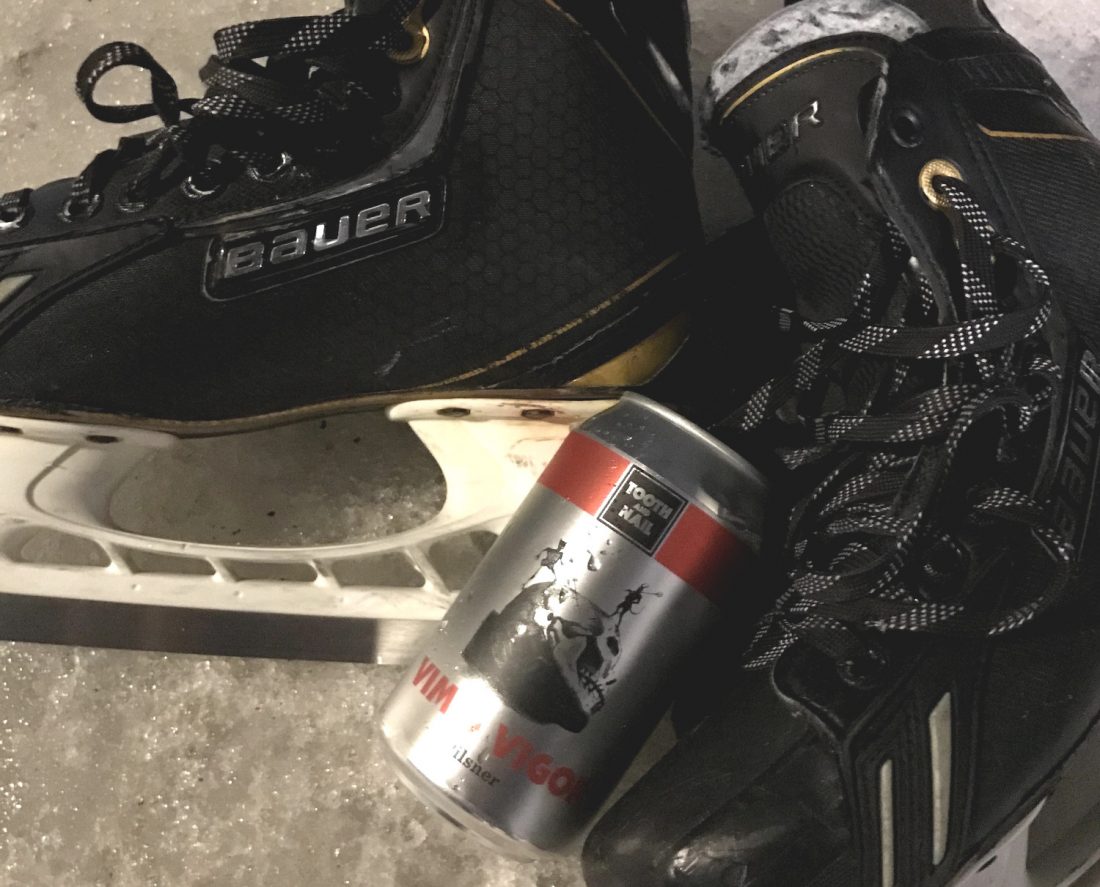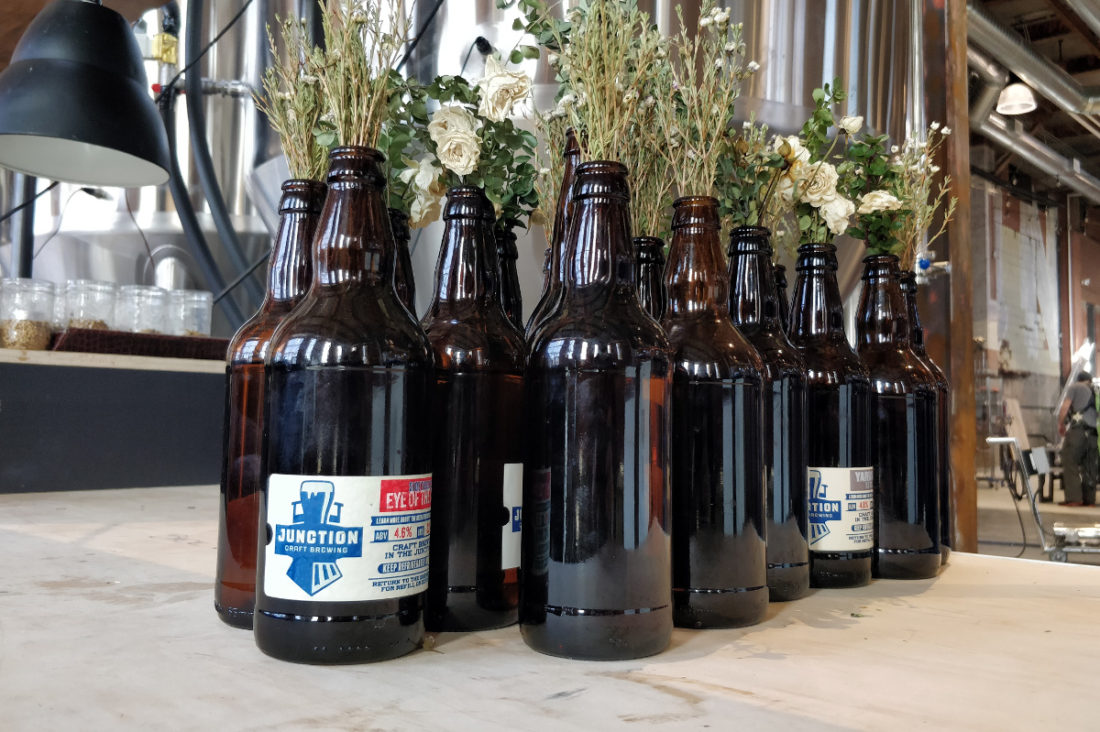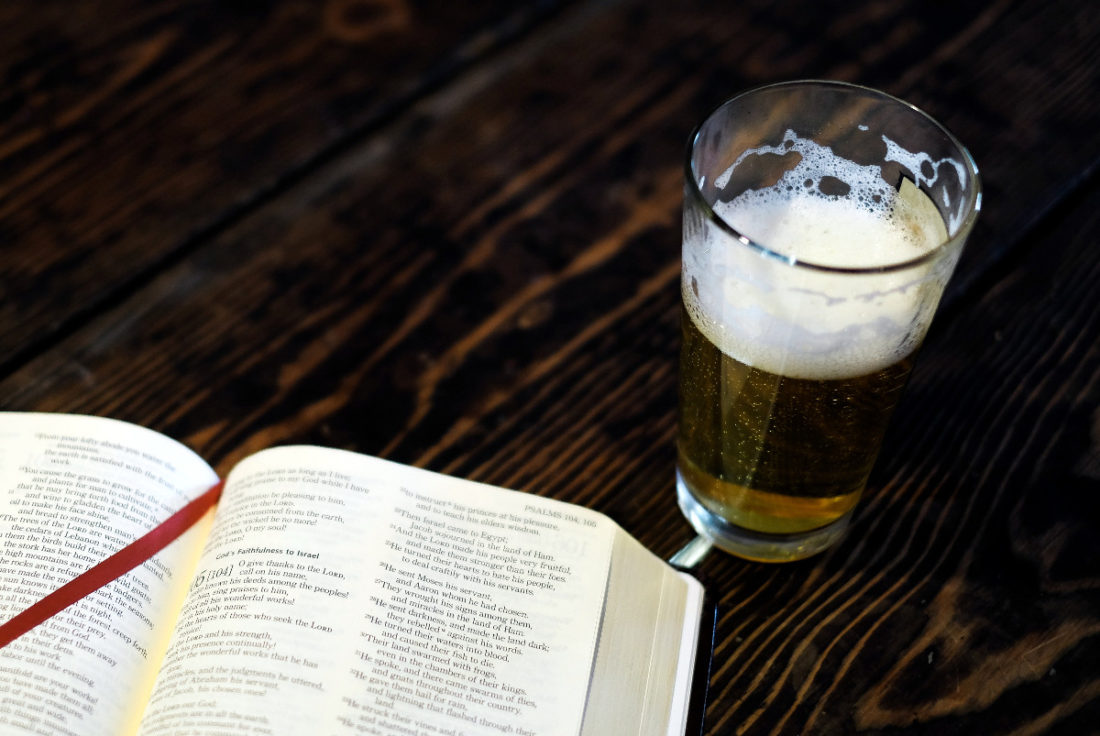
By Jordan Duff
Beer and running. While at first blush, these two popular pastimes seem like polar opposites, they can pair nicely. Consider events like The Canada Beer Run, where participants run through the host city, stopping at breweries along the way, and Run To Beer, a running group that ends their athletic endeavors at a brewery. Beer serves as the carrot that rewards the hard-working runner.
The Beer Mile is a different beast.
Rather than reward, the beer in a Beer Mile feels likes punishment. Drink a beer, run a lap, drink a beer, run a lap, drink a beer, run a lap and finally drink a beer, run a lap. Vomiting doesn’t disqualify you, but it incurs a penalty lap. The fact that there is a vomiting penalty in the rule book really tells you all you need to know. The race is mostly around based around not throwing up.
The Beer Mile gained notoriety over the last couple of years through media coverage. Despite the recommendations of friends and family, I decided I would attempt this venture. Like the Apollo Creed to my Rocky III, Canadian athlete Lewis Kent, a Beer Mile record holder and all-around nice guy, was kind enough to help me prepare for a winterized version of this event.
If Kent’s name is familiar, its because his combined running-drinking abilities have taken him from university to endorsement deals to Ellen and beyond.
“To be honest, most days I still can’t believe I’ve had such amazing experiences for pairing together chugging and running,” says Kent “The entire thing has been a surreal experience. I still remember the first article that was written on me and the beer mile, and how cool it all was! I had no clue it would end up on ESPN, Ellen, and so on.”
Revisiting his race times, now that I have attempted the feat, he deserves every accolade and more. But I’m getting ahead of myself.
I have long wanted to write about this culmination of leg and liver athleticism but felt unworthy. Whether due to a desire to drink heavily on a cold Wednesday evening or guided by my journalistic integrity (jk, its the former), I was inspired to attempt the mile before this article.
Because my beautiful home of Ottawa is currently under a thick sheet of ice, I decided I would skate the event. Equally important in this decision is that skating is easier than running.
Finding a location, for obvious reasons, proved to be obstacle number one. While this event should have been attempted on Ottawa’s gorgeous Rideau Canal, allowing me to fulfill a second bucket-list item, vomiting on a UNESCO World Heritage Site, a quiet track seemed a better option.
Lewis’ ethereal voice guided me as I prepared for the iced-mile: “Run fast, chug faster.”
Aside from a pre-race diet of Nutella and bread, Kent explained that he prepared for this event as he would for any other (beer-less) race with stretching and rest. But he, rightly, preached that this event demanded respect.
“Don’t underestimate how hard it is! A lot of people know they can independently drink four beers and run a mile, but when you put them together it is a whole different challenge. I would recommend training for it by heading to the track in the days leading up to your beer mile attempt and practice with a few runs where you finish with trying to chug a beer.”
Great advice – I should have taken my training more seriously; though I did sharpen my skates.
Because skating and beer drinking alone in the dark seemed like a not-so-subtle cry for help, I asked my buddy Dave to race with me. As we laced up, a heavy wind picked up on the crisp -17C eve. I asked Dave if the wind would be a tailwind or a headwind – he reminded me we were skating in a circle, so both, and likely also crosswind. He’s a smart guy, that’s why I brought him.
Our drink of choice was Tooth & Nail’s Vim and Vigor pilsner. BeerMile.com lists the runners’ beers of choice and most were lagers and pilsners – V&V is the best pilsner in Ottawa, if not Ontario. Just because you are binge-drinking on skates doesn’t mean you can’t have a little class.
The initial couple of laps felt good, I gained confidence, even as Kent’s advice cautioned, “Don’t overdo it the first two laps! You can always pick up the pace in the later stages, but if you go out too fast you will struggle on the beers and everything could go downhill.”
And things certainly went downhill in a flaming hell-bound handbasket. While the ease of skating plus the tasty pilsner felt great on the first two laps, the back two laps were hard and the back 2 beers were harder. I’ve never not looked forward to a beer like this before. This event was punishing, immensely harder than I expected and had me questioning so many life decisions. But I survived, barely, and that was on skates. I can’t imagine running this in the heat.
I would never dissuade anyone to attempt the feat, I would reiterate the importance of pregame meal and strategic burping throughout the race. I would also defer to the expertise of Lewis Kent, who serendipitously, is releasing a book in June on the history of The Beer Mile, his stories plus tips and tactics: A World Champion’s Guide to Running the Beer Mile: A Manual and Memoir of Running, Chugging, and (Not) Throwing Up.




